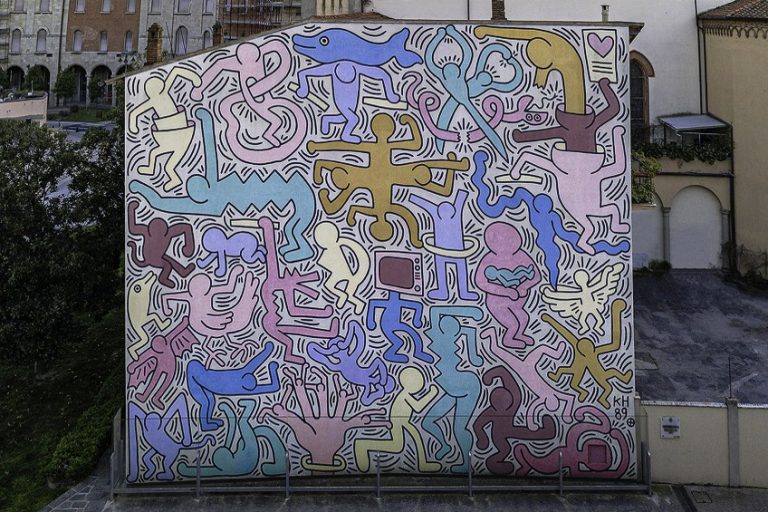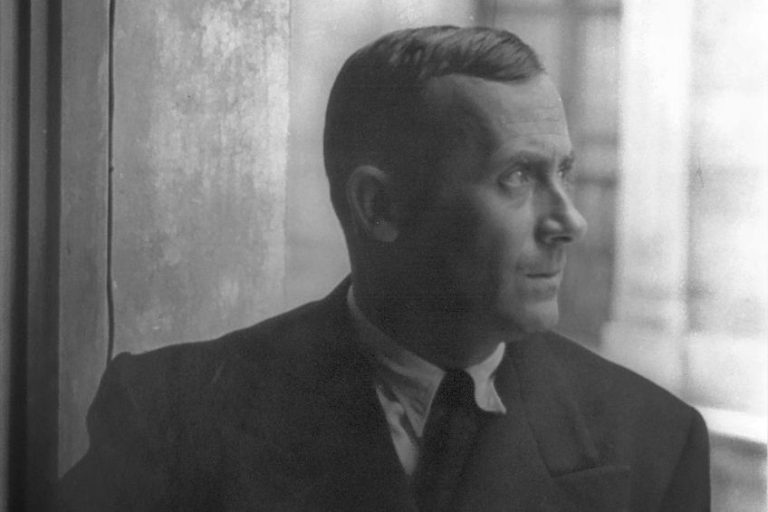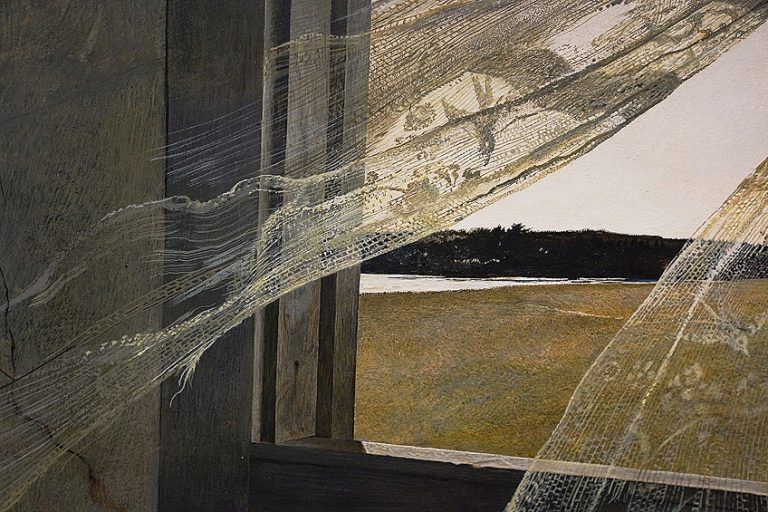“Rhythm 0” – Analysis of Marina Abramović’s Performance Art
Rhythm 0 was the title given to Marina Abramović’s 1974 art performance. In the performance, Marina Abramović stood stationary as the public were prompted by her instructions to do anything they wanted to her with one of the 72 objects she prepared. From a gun to perfume and honey, Rhythm 0 is a performance that many will remember for its controversial nature. Today, we will be exploring the Rhythm 0 in detail, which will provide you with all the essential facts on the performance and its reception in the art world. Read on for more about this extreme and risky performance!
Rhythm 0: Marina Abramovic’s 1974 Art Performance
You cannot discuss the year 1974 in art without mentioning one of the most controversial and astounding art performances of the time. Marina Abramović is recognized as an icon in performance art, whose unique and soulful performances have captured the attention of many art critics.
In 1974, Abramović laid out a table with 72 objects and items, which included a gun, bullet, kitchen knife, scalpel, honey, a piece of wood, white paint, matches, candle, rose, polaroid camera, feathers, alcohol, grapes, and even sulphur. Among the other household objects that were harmless included an apple, salt, cake, cotton, olive oil, a medal, comb, bandage, scarf, pen, spoon, fork, brush, safety pin, soap, flute, as well as red paint and blue paint. Her instructions towards the viewers were that they were given permission to do anything they wished to her using the items. The duration of her performance was set to last up to six hours, during which anything could happen to her.
According to Marina Abramovic, the performance drove her body to its limits. Initially, guests were kind and brought her a flower or a kiss. The performance began calmly, however, at some point her performance became physical and a participant moved her body, shoved her hands in the air, and even cut off her clothes using sharp blades. The performance was indeed taken to new heights given that Abramović’s own life was now in the hands of strangers.
The acceptance of the risk against her life and psyche was cemented with her statement in the performance “Instructions. There are 72 objects on the table that one can use on me as desired…I am the object. During this period I take full responsibility.”.
By the third hour, she had endured a series of sexual assaults from those who took advantage of her performance to harm her body. In the fourth hour, the same blade used to pry off her clothes was used to cut her neck so that the person could suck her blood. Eventually, a small group of concerned onlookers responded to Abramović’s performance after watching these severe attacks and formed a protective circle. Toward the end of the performance, a fight broke out between spectators after Abramović’s life was threatened. According to reports, a loaded gun was held to Marina’s head with the participant manipulating Marina’s own finger around the trigger.
One might wonder as to why a woman might endure such abuse from her audience for the sake of performance. Below, we will dive into the woman behind the performance, Marina Abramović, to uncover more details about the event.
Marina Abramović in Performance Art
| Artist Name | Marina Abramović |
| Date of Birth | 30 November 1946 |
| Nationality | Serbian |
| Mediums | Performance art, sculpture, and installation |
| Associated Movements, Themes, and Styles | Conceptual art, Contemporary art, ritual, self-transformation, consciousness, identity, the body, life, and death |
Marina Abramović was born in Yugoslavia and raised by relatives who were Partisans during World War II and worked under Josip Broz Tito’s Communist regime. Abramović began studying art at the Belgrade Academy of Fine Arts in 1965 and was soon lured in by the allure, freedom, and depth offered by performance art. Abramović was particularly attracted to the capacity to utilize her body as a vehicle for spiritual self-discovery and transformation. In the late-20th century, Abramović held a sequence of raw and emotionally charged performances that highlighted her body as a medium for the exploration of mortality, identity, and body politics.
Her performances involving her body sparked debate not only because of their danger, but because of Abramović’s use of nudity.
Abramović moved to Amsterdam in 1975 and started working with Frank Uwe Laysiepen (Ulay), a like-minded performer from Germany. Gender identity became a major theme in their collaboration and the two traveled extensively. In 1987, Abramović and Laysiepen performed Nightsea Crossing, which was a protracted act of reciprocal concentration and meditation performed in over a dozen different sites across the globe.
After the two decided to end the performance in 1988, they created a new performance called The Lovers, in which they walked from opposite ends of the Great Wall of China to convene in the center, and get married. However, after 90 days with an average distance of 20km a day spread across 2,000 km on each end, the two united only to part ways for the next 22 years.
By 2005, Abramović started to ponder the future of performance art, a medium in which individual works typically had no life outside their initial staging, with the exception of occasional video preservation.
That year, Abramović performed Seven Easy Pieces, a sequence of recreations, or re-performances, of important projects of her own, including several other performers, in an attempt to buck the trend. Abramović’s work was the subject of a wide-ranging retrospective at the Museum of Modern Art in 2010.
Abramović premiered the Artist is Present performance piece for the show, in which she sat calmly as museum visitors took turns sitting opposite her and staring at her while she stared back. Long lineups of visitors formed as a result of the opportunity to participate in the project. It was here, where Ulay showed up again after years of separation, and the two made contact.
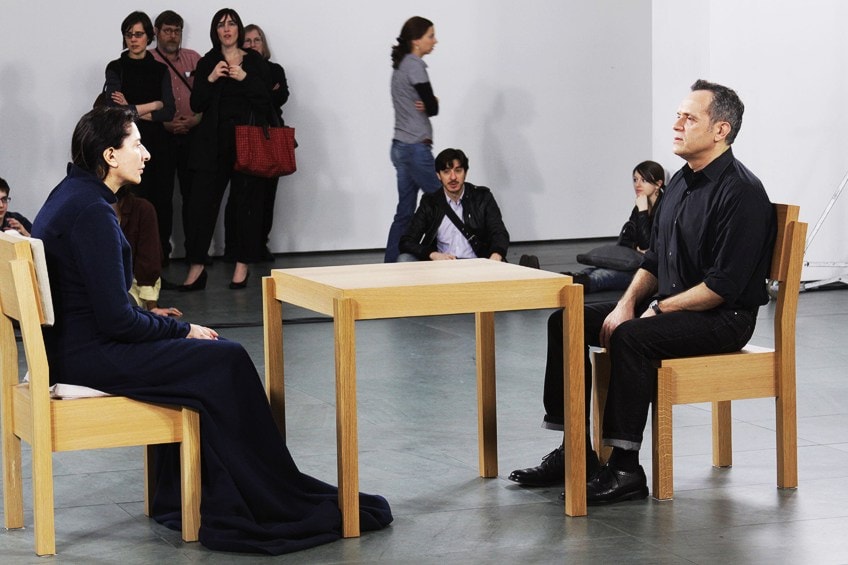
In August 2016, Abramović stirred outrage when excerpts from a previous version of her autobiography were distributed, in which she likened Aboriginals to dinosaurs and suggested that the Aboriginal people had large torsos that was a result of their interaction with Western culture.
“I have the greatest regard for the Aboriginal people, to whom I owe everything”, she said in response to the uproar on social media.

It is clear that performance art has always been a medium through which Abramović has tested the limits of her psyche and physical body. A woman of courage and bravery, Abramović has received her fair share of criticism, however, her work continues to inspire many performance artists, while exploring critical questions related to what the art world allows in the genre of performance and the extremes that artists may go to, to express their concepts.
Reviewing Rhythm 0: An In-Depth Analysis
Marina Abramović performed Rhythm Zero, one of her most shocking performances, in 1974 at the Galleria Studio Morra in Naples. For her work, she accepted full responsibility for the actions granted to her audience, how ever dangerous or criminal they may be. The six-hour performance swiftly turned into an unruly and violent spectacle, which reflected the exploitation of women and power dynamics that exist in society, regardless of rules and autonomy as a female.
A section of the audience engaged in damaging experimental behaviors on the artist’s body using 72 items of pain and pleasure at their discretion. Although a protective group emerged rapidly against the aggressors, it was not until the end of the period that the latter regained their awareness of shared humanity. The public stormed out of the studio as the artwork came to a close.
The performance was a symbol of willful vulnerability and exposure, reflecting the artist’s aim to push past any boundaries, while simultaneously forming an ambiguous covenant between the woman’s creator and her audience. Aside from that, the performance mirrored the truths about human nature, authority, permission, and accountability that are still relevant in our current culture.
The most crucial question to address is “How can the performance piece ‘Rhythm 0’ disclose major societal problems by analyzing a woman’s intentional and ambiguous vulnerabilities as an artist?”
Vulnerability and Exposure: Removing Boundaries
As stated in Abramović’s instructions, the artist chose to put her body in the hands of the public. She performed the vulnerable condition of women and empowered herself by offering her intentional assent, as both the subject and object of the audience’s desires. Her body served as a sexualized object for males, as well as a vehicle for communication and defiance of the masculine gaze.
The artist retained control over the performance’s setting through the items she chose, the permission she granted, and the allocated performance time, following John Cage’s model: both designate the end and start of their performances. Marina Abramović has always been hesitant to be labeled a feminist and was not part of the feminist movement in the 1970s. The performance cannot solely be approached from a feminist point of view since she does not believe her art to be feminist.
Such vulnerability might be a result of a larger legacy of self-flagellation, purging, and mythos, as well as military concentration and resilience, which she learned during her upbringing in Communist Yugoslavia and exposure to different cultures.
Abramović investigates the mechanics of the body, perseverance, and agony, incorporating a level of personal danger and suffering by pushing her mental and physical limitations. The performance was also a method to break free from external restrictions and led to spiritual transcendence defined by a theoretical and performative work that uses time as a vehicle for metamorphosis and transcendence.
The Volatile Relationship Between a Performer and Her Audience
The public’s vulnerability creates the agreement between the artist and the audience, which is expressed through connection and trust. The arrangement of the performance, as well as the public’s reaction, makes the energetic conversation with the audience ambiguous in this scenario. The ambiguity of the relationship begins with the artist’s selection of items: some are for joy, while others are for agony and even death.
In an evocation of Freud’s concepts of Eros and Thanatos, the two fundamental urges with which humans battle, the limits of the dualism, are blurred and investigate themes of enticement and mortality.
By highlighting the power balance between the public and the performer, Abramović examines the ambiguous nature of performance and permission in the context of art, and the relationships with the human conscience. Rhythm 0 was made in response to the artist’s sadistic and sensationalist criticism. As a result, this piece provided a chance to reconsider the performance technique and the function of the audience. This experimental approach focused on the audience’s constraints by allowing the audience complete control of the performance and nurtured the performer’s passivity.
This is similar to Herbert Blau’s purpose of performance, “to thrust the audience into the heart of the creative act”. The contract is ambiguous because of its unpredictability, which is evident in Abramović’s performances that are always constructing evocative experiences such that “they must connect in a totally new terrain and develop from that eternal time spent together”.
Despite expectations, the public’s actions and emotions made the performances scandalous after the few intimate advances quickly grew into uncontrolled and hazardous acts on the performer.
The reality that the artist is a woman cannot be overlooked. It casts a strong power dynamic in addition to the previously addressed vulnerability. Within a patriarchal culture, this gender component may enhance power imbalance and rationalize the extreme risks inflicted on the artist’s body. Abramović would later investigate the uneven relationship between women and men in Rest Energy. As a result, both shows use art to address larger societal issues.
Beyond the Performance Art Installment
Abramović’s body is thus also a means for testing human mental and moral boundaries. Abramović investigated social action and responsibility via the danger to her own body in this piece and her embrace of that risk. In her performance, she also included objects such as a whip, pistol, ax, lipstick, handkerchief, and box of razor blades, which stirred ambiguity in participants as to what the artist expected from the public.
However, one cannot place full accountability on Abramović for the harm inflicted on her since objects also presented the freedom of choice, while highlighting the true intent of strangers who viewed her body as an object to be played with. Abramović’s complete surrender to the performance was powerful in its impact as a demonstration of what society was capable of, regardless of whether she relinquished her boundaries.
The performance highlighted a larger cultural phenomenon with authority and its abuses, as well as a lack of accountability on the part of the public, who under the guise of art and performance, chose to cause harm.
Different audience factions showed their extreme aggression when given the freedom to act without limitations. The performance not only portrayed the exploitation of women but also the presence of group dynamics. At one point, two groups, guardians, and aggressors were at odds, resulting in a full-fledged brawl. As a result, the performance and the controversy it stirred called into question our ability to respond in the face of heinous actions like sexual abuse, regardless if the person involved granted permission or not.
Another significant point that was established in the performance was the artist’s state of mind compared to the psychological trauma of victims of sexual abuse. A similar state of dissociation and fawning occurs, which enables prospective abusers to dominate the situation. Abramović later indicated that she felt extremely violated and Thomas McEvilley remarked that she was so dedicated to the work that “she would not have fought assault or murder”.
Furthermore, the performance provided a powerful example of the notion of accountability. The artist regained mental consciousness after six hours and “everyone scurried away to avoid a real encounter”. The way that the performance transpired shook many to the core since the only barrier between moral conscience and the evident danger of another human being was the guise of performance. The audience was “unable to confront her as a person” as if they had rediscovered moral laws. When the public saw Marina’s facial expression, they subsequently saw themselves and witnessed their violence.
The escape of the hostile audience was unavoidable due to their anxiety about being implicated in the process and the ease with which they may devalue a female artist.
Even if Abramović did not consider herself a “female artist,” this final performance confronted masculine aggression against feminine bodies. Marina Abramović opted to embrace physical and mental vulnerability to push her boundaries and create a raw energy exchange with the audience. One can only imagine the psychological burden that Abramović went through for her performance, or perhaps, a social experiment.
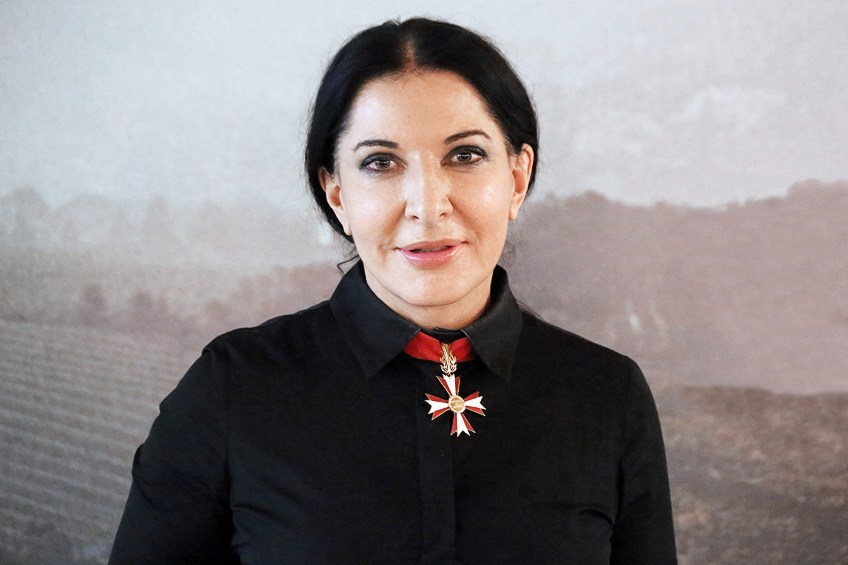
The setting allowed for the production of performance based on the responses of the audience, which countered the sensationalist viewpoint of the actors. The power ties emphasized in this debate are ambiguous and confuse the position of the female artist as both the object and subject.
Beyond these vulnerabilities and creative contracts, the performance illustrated humans’ inclination to misuse power, if granted the right to do so. After Marina Abramović regained awareness, the viewer was no longer confronted with the “permission” to dehumanize her.
This also reminds us of Yoko Ono’s piece Cut Piece (1964), where the artist investigated participatory art by inviting the audience to cut off her garments. Both performances call into question the female body’s fragility and objectification in the face of patriarchy. Both performances demonstrated how spectators and participants become objects to each other.
Rhythm 0 contributed to many artists’ reflection on the purpose of art. If this performance reflected current issues and investigated a novel type of performance, it also calls into question the boundaries of art. Is it art when the audience almost entirely determines the artwork or when the presentation becomes a mere exhibition of gendered patterns of violence? Or, are there no guidelines or code of ethics when it comes to performance art?
Marina Abramović, a performance artist, left her body and life completely in the hands of strangers for six hours. By transforming her body into an object to be exploited, she not only demonstrated a larger societal issue in the human psyche, but she also exposed herself to intense psychological trauma and physical harm. “Rhythm 0” was as much a piece of bold Modern art as it was a type of social experiment that lifted the veil on human nature and exposed the fine lines between human conscience, sadistic desires, and patriarchal violence on women.
Take a look at our Marina Abramović Rhythm 0 webstory here!
Frequently Asked Questions
Who Is Marina Abramović?
Marina Abramović was born in 1946 in Belgrade, Yugoslavia. Abramović, an innovator of performance art as a sensory art form, has used her body as the topic and form of media in performance art to test her physiological, psychological, and emotional boundaries. Abramović is most famous for her evocative and emotionally challenging performances that put her body and life at risk in the pursuit of her own self-enlightenment and transformation. Her work has intrigued, attracted, and occasionally repulsed live audiences due to her exploration of human suffering, repeated behavior, and morally questionable public engagements.
Why Was Marina Abramović’s 1974 Art Performance Important?
Marina Abramović’s 1974 performance Rhythm 0 was incredibly important since it explored the complex themes of the human conscience, artistic permission in performance art, and the exploitation of femme bodies. Her performance piece stirred controversy since it resulted in Abramović experiencing multiple violations to her body. Rhythm 0 involved a series of instructions given to strangers, to use various objects that Abramović provided, directly on her in whatever way they saw fit. While she did not expect such a traumatizing outcome, Abramović’s performance highlighted many deep societal issues that are still relevant in today’s era.
Were the Spectators in Marina Abramović’s Rhythm 0 Performance Legally Prosecuted?
According to the record of the performance and many accounts, the participants in the performance were not prosecuted or held liable in any way for the harm done to Abramović’s body. Her performance began with her direct statement claiming that she was to take full responsibility for any actions done to her and since she was not killed or maimed, she would not be able to hold anyone criminally liable. Abramović also did not verbally indicate that she wished the participants to stop inflicting harm and cease her discomfort, which means that her permission enabled her abuse. The spectators who witnessed the performance were not criminally prosecuted.
Which Dangerous Objects Were Used in Rhythm 0?
In Marina Abramović’s performance Rhythm 0 (1974), she provided the audience with 72 objects, including dangerous items such as a gun, bullets, a box of razor blades, hammer, saw, nails, an ax, scissors, a pocket knife, kitchen knife, needles, and a metal pipe, among many other objects that could be used against her in life-threatening ways.
Nicolene Burger is a South African multi-media artist, working primarily in oil paint and performance art. She received her BA (Visual Arts) from Stellenbosch University in 2017. In 2018, Burger showed in Masan, South Korea as part of the Rhizome Artist Residency. She was selected to take part in the 2019 ICA Live Art Workshop, receiving training from art experts all around the world. In 2019 Burger opened her first solo exhibition of paintings titled, Painted Mantras, at GUS Gallery and facilitated a group collaboration project titled, Take Flight, selected to be part of Infecting the City Live Art Festival. At the moment, Nicolene is completing a practice-based master’s degree in Theatre and Performance at the University of Cape Town.
In 2020, Nicolene created a series of ZOOM performances with Lumkile Mzayiya called, Evoked?. These performances led her to create exclusive performances from her home in 2021 to accommodate the mid-pandemic audience. She also started focusing more on the sustainability of creative practices in the last 3 years and now offers creative coaching sessions to artists of all kinds. By sharing what she has learned from a 10-year practice, Burger hopes to relay more directly the sense of vulnerability with which she makes art and the core belief to her practice: Art is an immensely important and powerful bridge of communication that can offer understanding, healing and connection.
Nicolene writes our blog posts on art history with an emphasis on renowned artists and contemporary art. She also writes in the field of art industry. Her extensive artistic background and her studies in Fine and Studio Arts contribute to her expertise in the field.
Learn more about Nicolene Burger and the Art in Context Team.
Cite this Article
Nicolene, Burger, ““Rhythm 0” – Analysis of Marina Abramović’s Performance Art.” Art in Context. June 13, 2022. URL: https://artincontext.org/rhythm-0/
Burger, N. (2022, 13 June). “Rhythm 0” – Analysis of Marina Abramović’s Performance Art. Art in Context. https://artincontext.org/rhythm-0/
Burger, Nicolene. ““Rhythm 0” – Analysis of Marina Abramović’s Performance Art.” Art in Context, June 13, 2022. https://artincontext.org/rhythm-0/.



